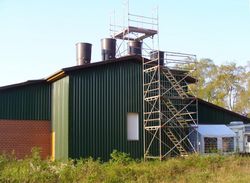Dossier
Emissions – more than just an unpleasant odour
Jochen Hahne und Marcus Clauß | 22.06.2022
When incorrectly operated stables or improperly expelled manure literally “stink to high heaven”, residents are often alarmed. But odour nuisance is just one part of the problem.
Animal husbandry is the most important source of ammonia emissions in Germany. Ammonia (NH3) is a gas that is formed from urea, which is excreted via the urine and feces of animals. The emissions occur along the entire manure chain: from the stables, the slurry and manure storage areas as well as in fields and meadows where manure is applied.
Animal husbandry is also the largest emitter of the greenhouse gas methane (CH4) in Germany. The emissions are primarily due to the digestion of ruminants. Storage of animal excrement under oxygen-free conditions, for example in a slurry pit, promotes methane emissions. By deploying slurry and manure in biogas plants, the methane can be used, specifically in terms of climate protection, for power generation.
A topic that is of increasing interest in public discussions is the emission of bioaerosols. In particular, airborne microorganisms such as bacteria or moulds from stables are suspected to negatively affect human health. Here science is called for, because the potential risk for humans has been insufficiently researched so far.

![[Translate to English:] Slurry spreading by drag hose: Agricultural animal husbandry is the most important cause of ammonia emissions in Germany. Slurry spreading by drag hose](/media/_processed_/0/f/csm_DF09_04_Guellefass_Schleppschlauch_9_RGB_62ea597f98.jpg)

![[Translate to English:] Bioaerosols : Tiny particles, big effect](/media/_processed_/4/9/csm_Dossier_Emissionen_Hintergrund_Bioaerosole_8cad050cef.jpg)

![[Translate to English:] Durch die Größe der Ställe und den hohen Tierbesatz entsteht viel Abluft mit unerwünschten Emissionen. The situation in poultry keeping](/media/_processed_/e/5/csm_Bild8_Huehnerhaltung_3006915f3d.jpg)



